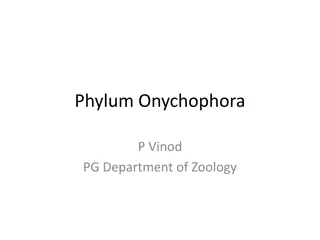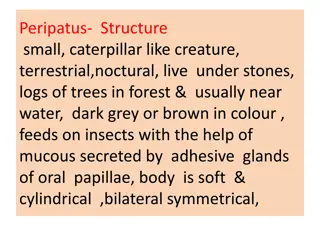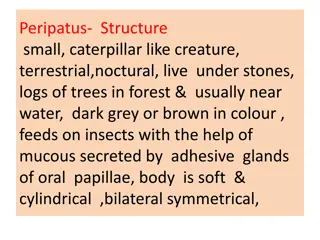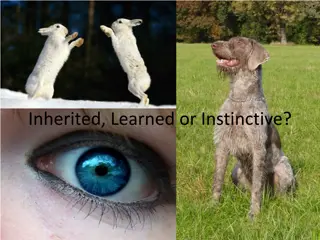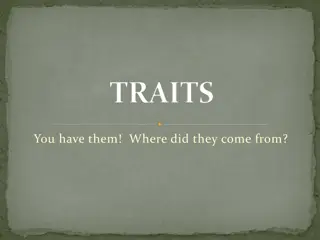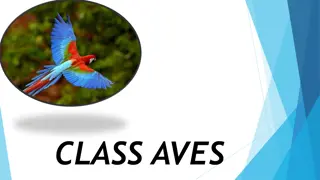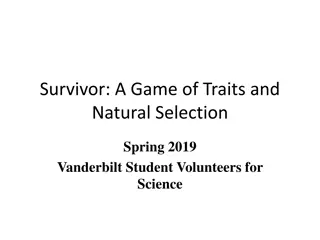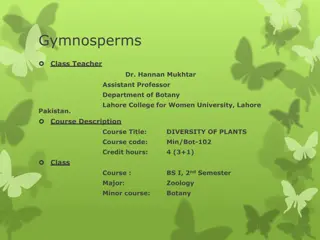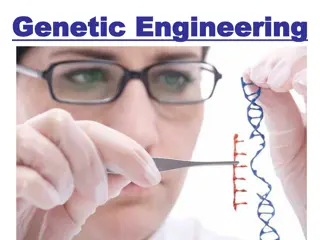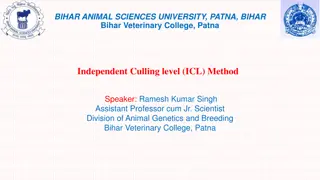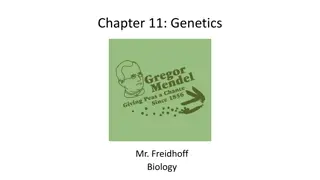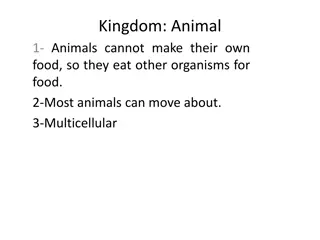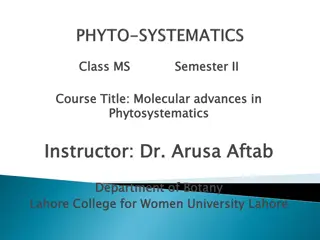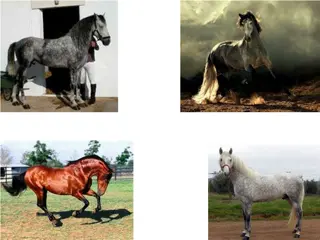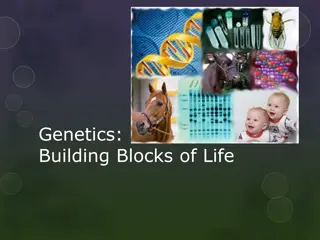Overview of Class Onycophora (Peripatus) Characteristics and Traits
Class Onycophora includes organisms like Peripatus, characterized by features such as possessing a thin cuticle, soft muscular body wall, scattered spiracles, cilia in genital organs, and wormlike body structure with unsegmented legs. They exhibit separate sexes, direct development, and possession of nephridia and gills. Their body is divided into cephalothorax and abdomen, and they have appendages modified for various functions like swimming and food capture. Onycophorans have antennae, antennules, well-developed mouthparts, and an exoskeleton, functioning mainly as land-dwelling creatures.
Download Presentation

Please find below an Image/Link to download the presentation.
The content on the website is provided AS IS for your information and personal use only. It may not be sold, licensed, or shared on other websites without obtaining consent from the author. Download presentation by click this link. If you encounter any issues during the download, it is possible that the publisher has removed the file from their server.
E N D
Presentation Transcript
Body wormlike and externally unsegmented with imperfectly jointed legs each with 2 claws
Queen or antennary gland for excretion
Appendages modified for swimming, walking and food capture
Body divided into two 2 regions, cephalothorax and abdomen
Arthropods with fully chitinised exoskeleton
They have two regions, proxoma and opisthosoma
Well developed appendages modified for various purposes, maybe sensory, prehensile or for walking but typically four pairs of walking appendages
Excretion by coxal glands or malpighian tubules
Sexes separate with direct development
Possession of a pair of chelicerae (instead of antennae)
The body is covered by chitinous exoskeleton
Body divided into three regions, head, thorax and abdomen
On the head are found the following: - a pair of antennae, a pair of mandibles and 2 pairs of maxillae, adapted for sucking, biting, piercing, and chewing.
Two pairs of wing, some a pair, some none, when two pairs on mero and Meta thorax.
Respiration is by trachea, branched spiracles
They have a complete digestive system, fore, mid and hind gut.
Malphighian tubules open into the hind gut.
Complete or incomplete metamorphosis. When complete egg larva pupa adult. When incomplete egg nymph adult.
Pathonogenous , some of them reproduce by parthenogenesis in form of sexual reproduction


